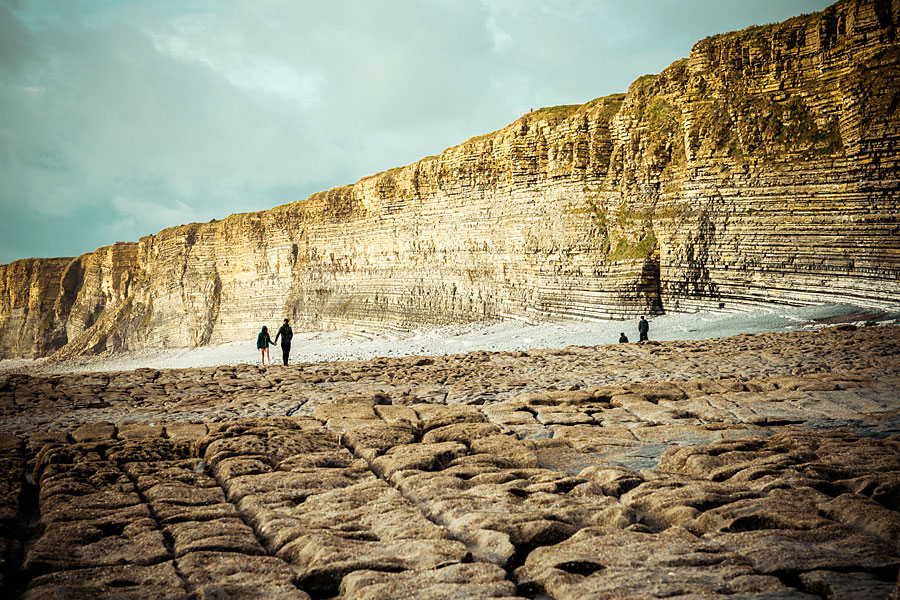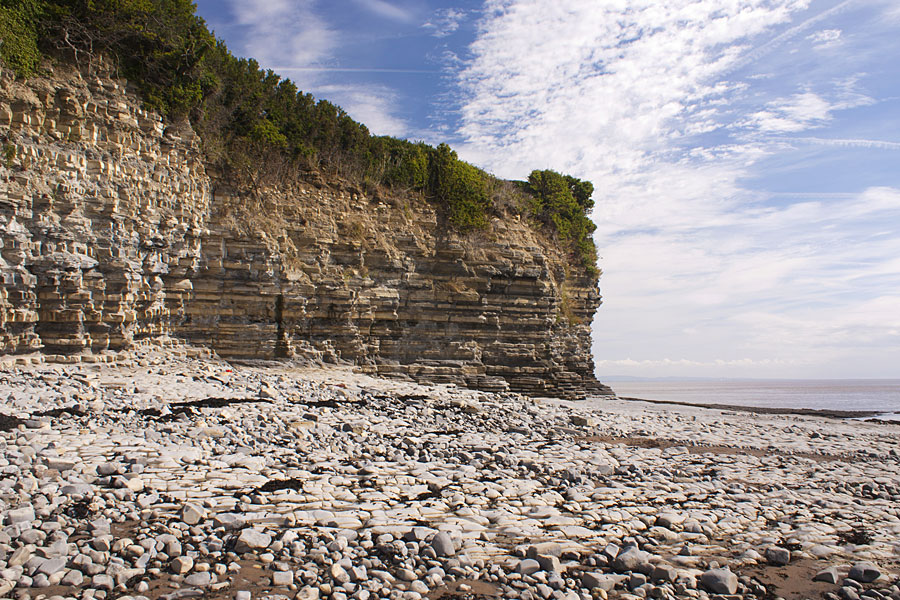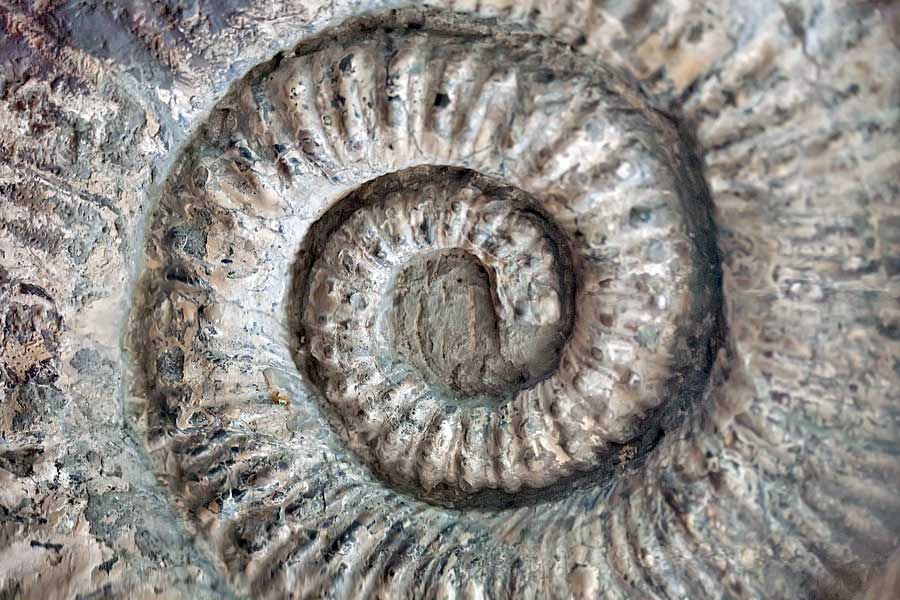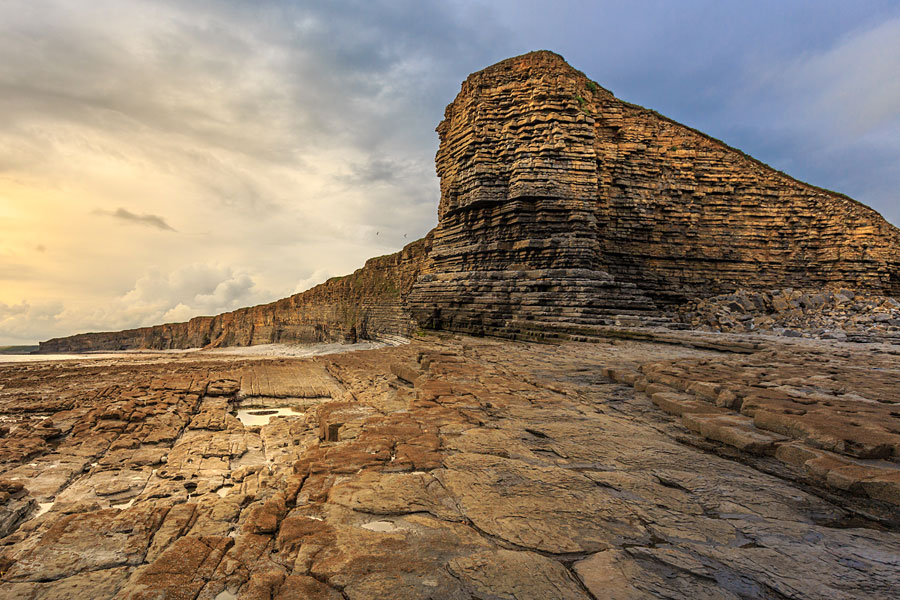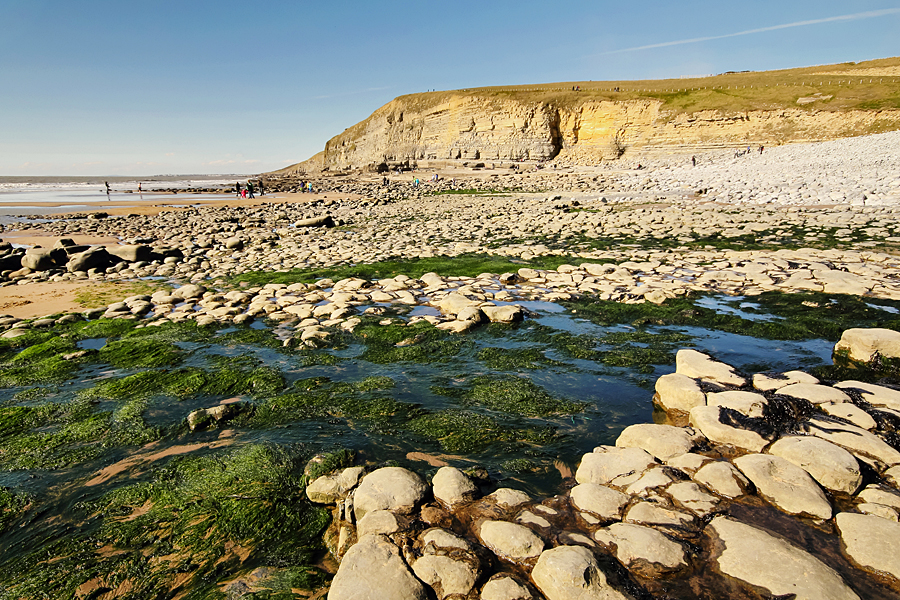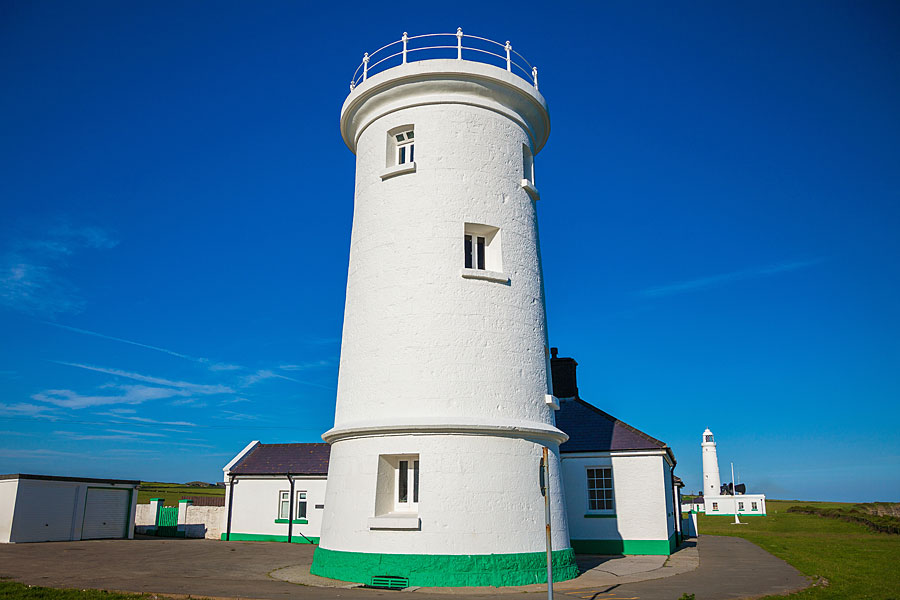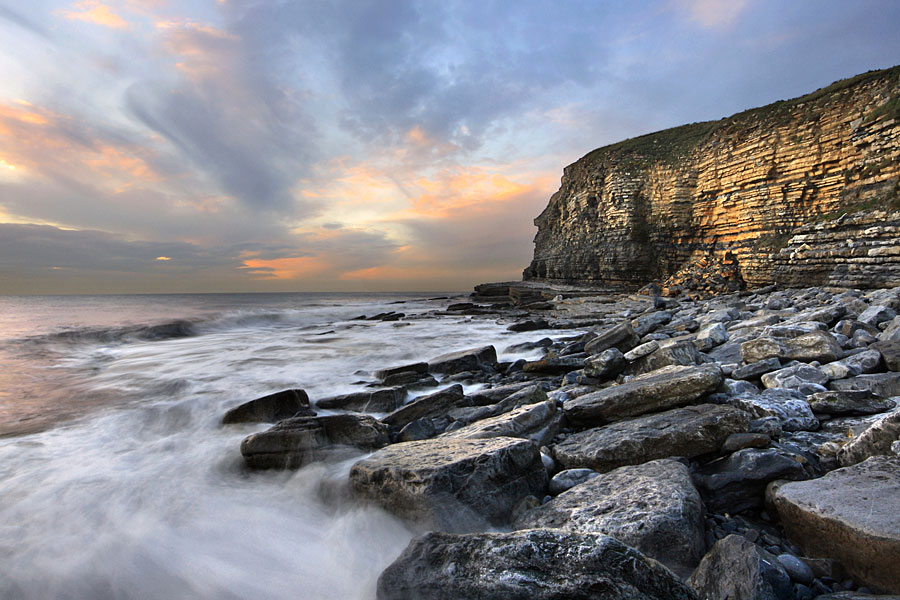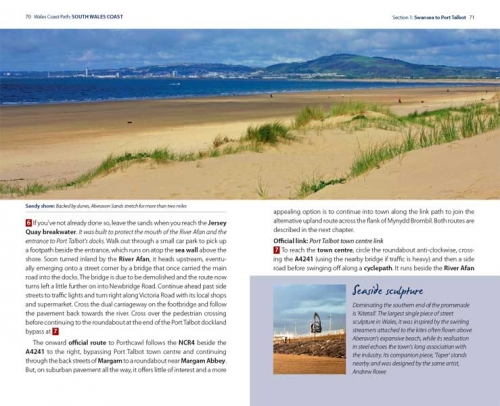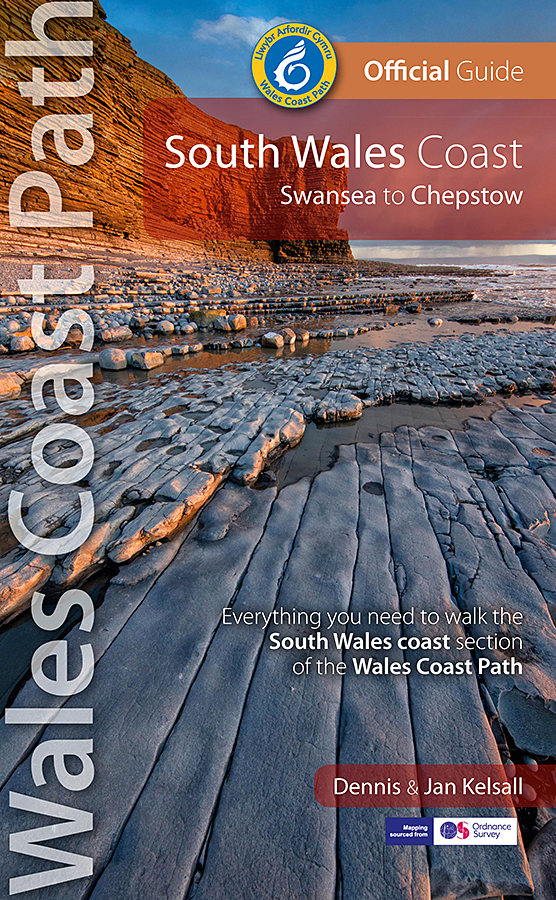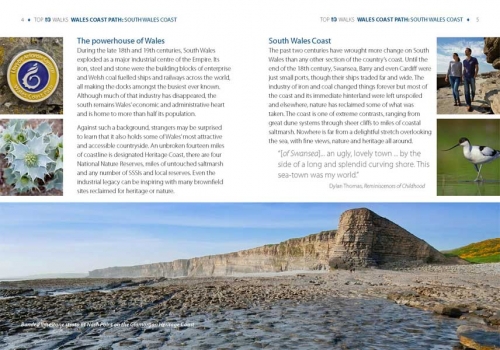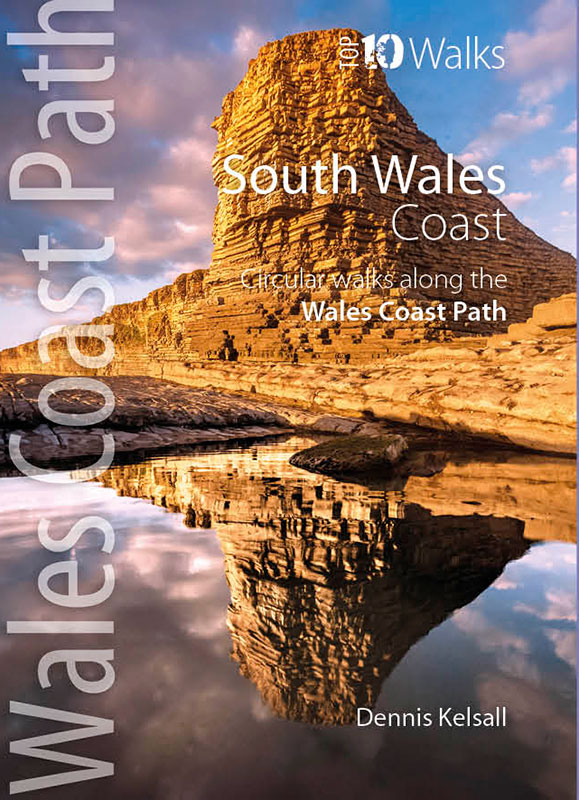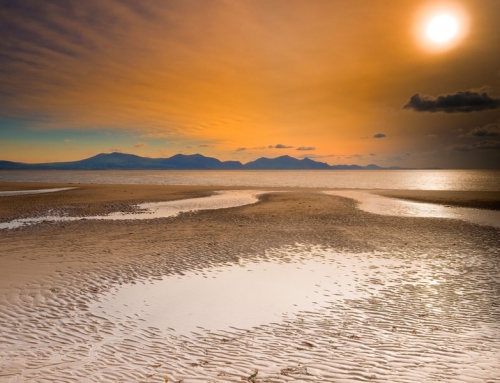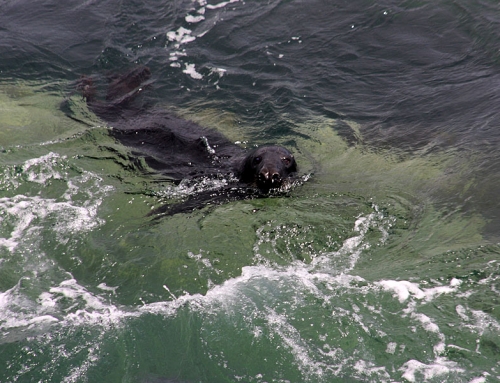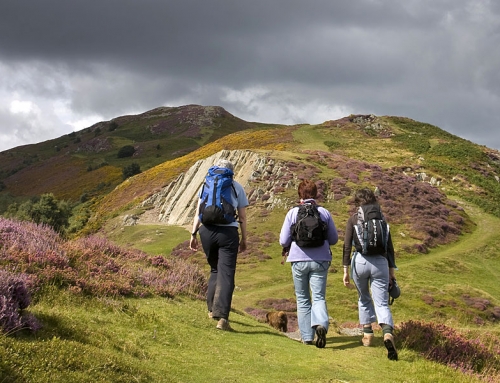Timeless limestone cliffs dominate the Glamorgan Heritage Coast
Fiona Barltrop enjoys a dramatic walk along the Glamorgan Heritage Coast
A COASTAL WALK IS A TONIC at any time of year, but especially during the winter months when, on a sunny day, the reflection of low sunlight on water intensifies the brightness and lifts the mood.
With the changes in both the sea state and the tide, no two days are ever the same along the coast, and nowhere is this more marked around our shoreline than the Bristol Channel, where the tidal range is the second biggest in the world after the Bay of Fundy in Canada.
Fossil-rich limestone cliffs
I had at last made it to the Glamorgan Heritage Coast on the northern side of the Bristol Channel, a stretch of coastline I have long wanted to get to know, and set off from Llantwit Major, joining the cliff-top east of Llantwit’s beach.
By chance it was around the time of the new moon, ie spring tides (when the difference between high and low water is greatest) and the start of my walk coincided with low tide, fully exposing the beach as far as Col-huw Point. I’d seen many a photo of this coastline’s dramatic near vertical cliffs – made up of layers of limestone and shale (mudstone), formed during the early Jurassic period – but there’s nothing like viewing such scenery with your own eyes. The shore platforms that extend from the base of the cliffs were clearly visible with the tide out.
The walking along the level grassy cliff tops was quite easy, and I’d soon reached St Donat’s Bay where I found three foreign teenage girls sitting on the sea wall in the sun, students from the adjoining Atlantic College, an international college which occupies St Donat’s Castle (formerly owned by American newspaper publisher William Randolph Hearst).
“There were, in fact, two lighthouses, the lower one abandoned in the 1920s. The other was to be the last manned lighthouse in Wales, becoming automated in 1998.”
Twin lighthouses
Continuing along the coast towards Nash Point Lighthouse, attractive ceramic Wales Coast Path waymarks caught my eye, something I’ve not seen elsewhere along the WCP. The lighthouse was built in 1832 to mark the hazardous sandbank off Nash Point, following the wrecking of the passenger steamer Frolic, when many lives were lost. The funereal tolling of the bell of the buoy, which marks the eastern end of the sandbank, seemed quite apposite.
There were, in fact, two lighthouses, the lower one abandoned in the 1920s. The other was to be the last manned lighthouse in Wales, becoming automated in 1998. With the tide still well out I could see the sandbank for myself, but the water was starting to cover it quickly. The only ups and downs of any note along this coast are the few wooded valleys crossed along the way, which provide contrast to the otherwise fairly tree-less cliff-top.
Fossil ammonites
Arriving at the promontory of Trwyn y Witch, I had a look at the walled gardens and ruins of former Dunraven Castle – a 19th century castellated mansion, demolished in the 1960s – before walking round the headland. This proved the highlight of the walk, with the views from either side by far the best I’d seen. With the tide now in, the surfers were out enjoying the waves at Dunraven Bay.
From here it was onto Ogmore-by-Sea in time for sunset and the bus back, well satisfied by a fine day’s walk.

